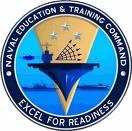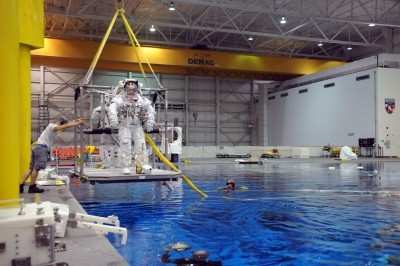Civilians Get Military-Style Survival Training
 Seven members of the 2009 class of NASA astronaut candidates
recently completed water survival, aviation physiology and aviation
indoctrination flight training at Naval Air Station (NAS)
Pensacola, Florida.
Seven members of the 2009 class of NASA astronaut candidates
recently completed water survival, aviation physiology and aviation
indoctrination flight training at Naval Air Station (NAS)
Pensacola, Florida.
The initial cadre of NASA astronauts in 1959 were all military
pilots, so each had already gotten flight and survival training.
Today's astronauts are a mix of military and civilians, and have
diverse backgrounds.
"As we began to select civilians, it made sense to give them
similar training to what the military candidates brought to the
program," said Duane Ross, NASA's manager for astronaut selection
and training at the Johnson Space Center in Houston. "The Navy
survival and flight training is exactly what we needed, they're
easy to deal with, and they were able to work with the [candidates]
schedule."
The entire class consists of 14 aspiring astronauts, who started
their training by honing their survival skills with the Center for
Security Forces (CENSECFOR) detachment in Brunswick, Maine. The
group travelled to the Navy's 12,500-acre Rangeley mountain
wilderness training facility, where they learned land survival,
navigation and field medicine.
"We usually get to train new aviators at the beginning of their
careers, but these NASA candidates are already experts in their
chosen fields, as all of the civilians hold advanced degrees," said
Hull Technician 1st Class Michael Pavlovick, Survival, Evasion,
Resistance and Escape instructor at CENSECFOR. "These guys learned
very quickly, and have an amazing work ethic. Their two-day field
survival exercise went extremely well; I can see why they were
chosen for the astronaut program."
 Following their land survival training in Maine, the seven
non-aviators in the class travelled to NAS Pensacola for water
survival, aviation physiology and flight training, including flight
training in simulators, familiarization flights and instrument
training flights in the T-6A Texan II turbo-prop aircraft.
Following their land survival training in Maine, the seven
non-aviators in the class travelled to NAS Pensacola for water
survival, aviation physiology and flight training, including flight
training in simulators, familiarization flights and instrument
training flights in the T-6A Texan II turbo-prop aircraft.
Lt. Col. Kenneth Devero, the training officer for Training
Airwing 6 was the project manager for the candidates during their
month-and-a-half stay at NAS Pensacola.
"The candidates training with us in Pensacola are mission
specialists, not pilots - so they need to receive flight training
very similar to what we give our naval flight officers (NFO)," said
Devero.
"Although they don't get the full NFO syllabus, the training
provides a great aviation orientation for the [candidates]."
"I expected the flight training to be tough," said Dr. Janette
Epps, an aerospace engineer. "But with our abbreviated syllabus
they really throw a lot at you and expect you to learn quickly.
Since we will be flying in the T-38 Talon jet trainer on a regular
basis with NASA, this is exactly what we need."

The NASA class of 2009 is focused on the International Space
Station, as current plans call for the space shuttle to be phased
out by the time they complete their training. The term
'international' also applies to this class of candidates; in
addition to the nine U.S. candidates, five international members,
including three Japanese and two Canadian candidates, have joined
the class.
With their aviation indoctrination complete in mid-November, the
candidates returned to the Johnson Space Center in Houston to
continue their astronaut training, which includes scientific and
technical briefings, intensive instruction in International Space
Station systems, extravehicular activity (space walks), and
robotics. The entire candidate syllabus takes approximately 18
months to complete.
 Aero-News: Quote of the Day (11.26.25)
Aero-News: Quote of the Day (11.26.25) ANN's Daily Aero-Term (11.26.25): Takeoff Hold Lights (THL)
ANN's Daily Aero-Term (11.26.25): Takeoff Hold Lights (THL) ANN's Daily Aero-Linx (11.26.25)
ANN's Daily Aero-Linx (11.26.25) Airborne Affordable Flyers 11.20.25: Sonex $$$, SnF 26 MOSAIC DAY, P. Ponk STCs
Airborne Affordable Flyers 11.20.25: Sonex $$$, SnF 26 MOSAIC DAY, P. Ponk STCs ANN's Daily Aero-Linx (11.27.25)
ANN's Daily Aero-Linx (11.27.25)





